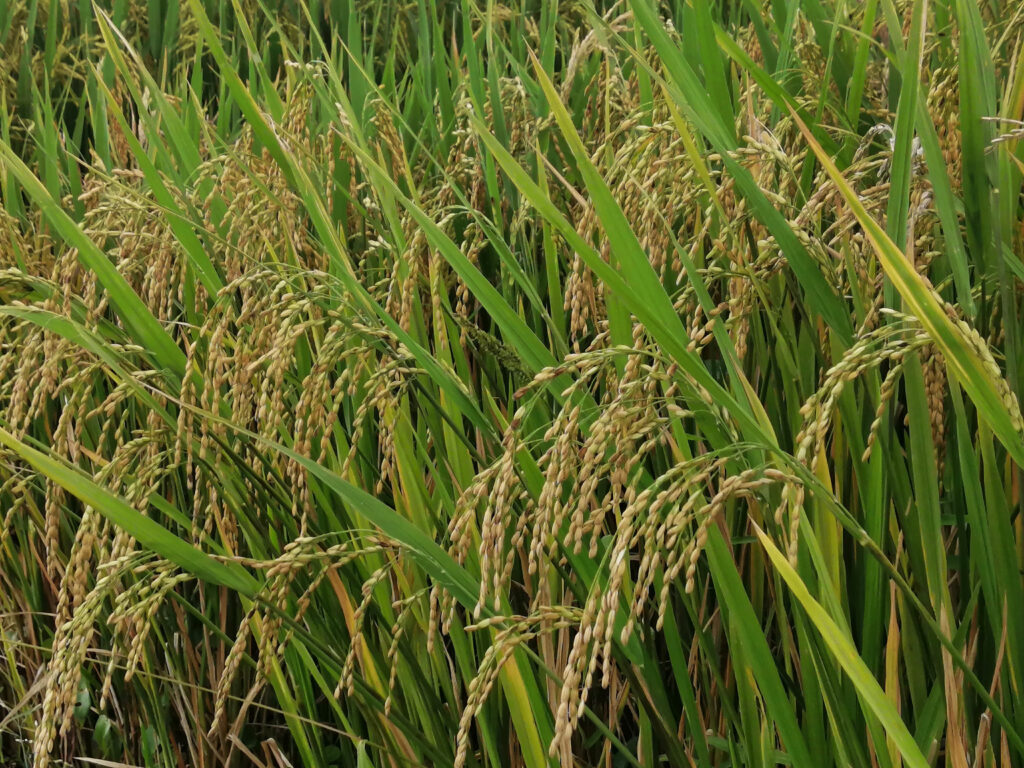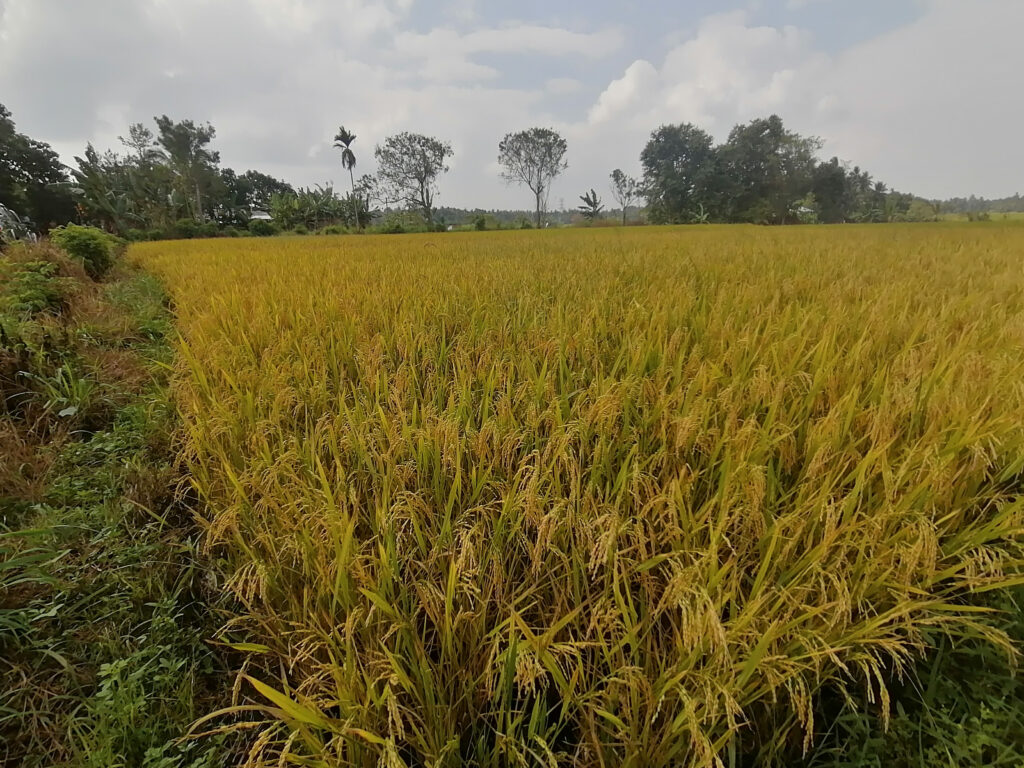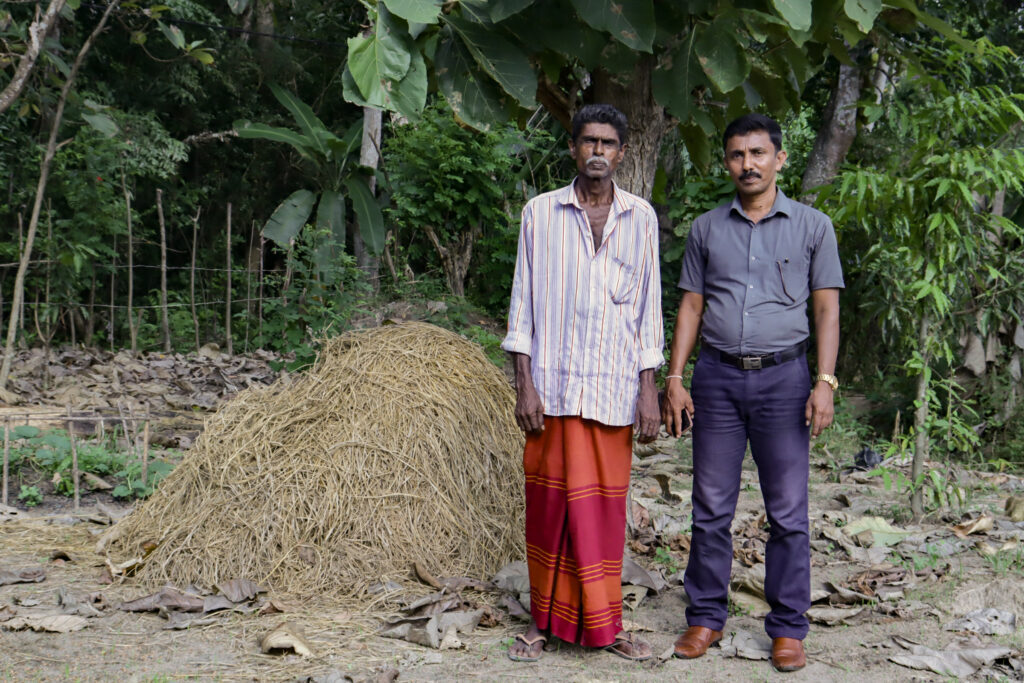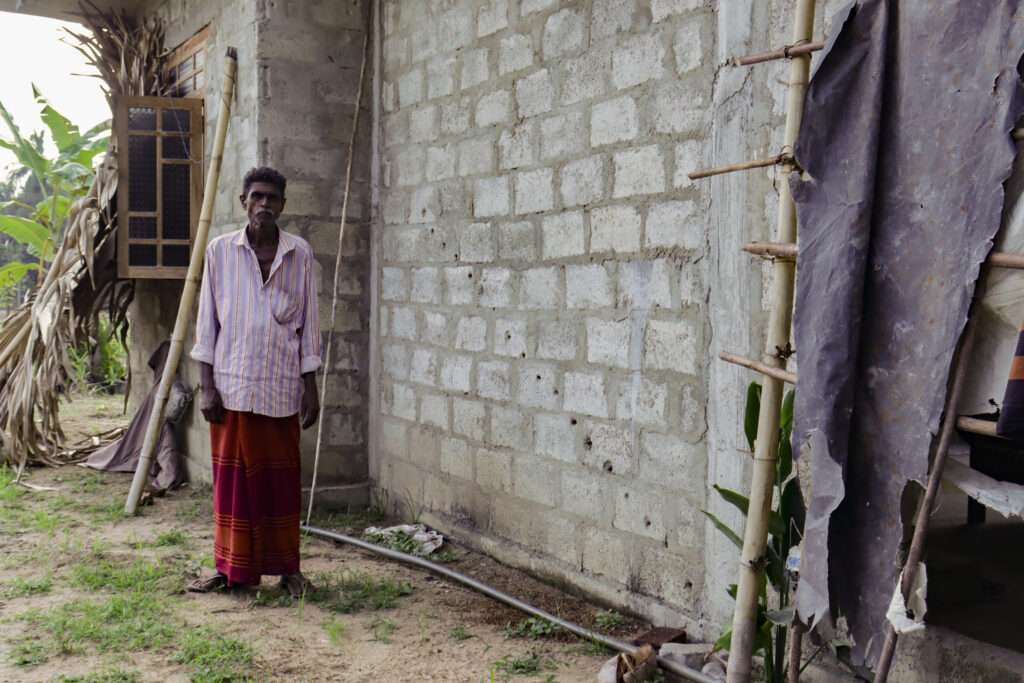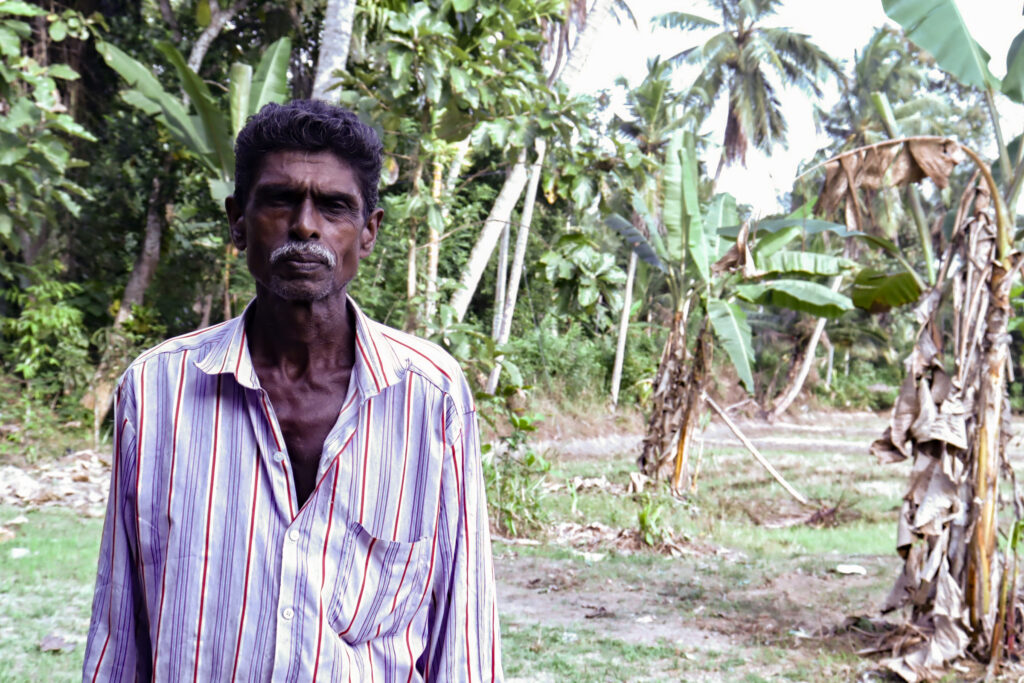FAO promotes Integrated Plant Nutrient Management in paddy farming for better yields.
For four decades, Chandrasena, a seasoned paddy farmer in Ampara, has devoted himself to maximizing yields on the two-acre plot of paddy fields he inherited from his father. Despite facing myriad challenges he recently experienced a bountiful harvest thanks to Integrated Plant Nutrient Management (IPNM), part of the “RiceUP” project implemented by the Department of Agriculture and the Food and Agriculture Organization of the United Nations (FAO), with funding from the European Union (EU).
“Over the years I have witnessed how farmers face numerous difficulties trying to get better yields. We have faced drought, heavy rain, pests and diseases that destroyed our harvests. But this year has been a blessed year. This year’s harvest has been good. This Maha season we harvested 1800kg paddy per acre which is around 300kg more than the last season,” says Chandrasena.
Besides increased yields, IPNM’s guidance in fertilization and soil management significantly reduced Chandrasena’s urea usage from 100kg to 60kg per acre, saving costs. With the assistance of Agriculture Instructor E M Dhammika Bandara, Chandrasena and 28 fellow farmers in Uhana, Ampara, learned IPNM techniques through Farmer Field Schools, resulting in a remarkable increase in yield despite adverse weather conditions.
“This is one of the best programmes we have come across during my tenure working in the field. The application of the Farmer Field School methodology has been successful. These farmers have cultivated 60 seasons in their life, but they have not come across the IPNM technology,” says Dhammika. “Chandrasena’s plot was the control plot. We managed to see better harvest from his field as he applied the IPNM practices exactly as taught. We could see a clear difference to non-IPNM plots, IPNM plots had a higher yield even with bad weather.”
Chandrasena’s success story highlights the potential of IPNM to enhance yields and economic sustainability for smallholder farmers like himself. While he currently supplements his income with daily wage jobs, Chandrasena remains optimistic about the future of paddy farming, especially with his son’s support and potential continuation of the family tradition.
“My son is employed but supports my farming as much as possible, hopefully he will continue to cultivate paddy in the future.”
Paddy Farmers get better yield with Integrated Plant Nutrient Management promoted by FAO
FAO promotes Integrated Plant Nutrient Management in paddy farming for better yield
Being a paddy farmer for 40 years in Ampara is not just coincident. Chandrasena has poured his blood, sweat and tears to make sure his paddy field get better yield during these 40 years of time. Not a day has gone by without him tending to the paddy field to make sure he has enough income to look after his two children and his wife from the two acres of paddy field he inherited from his farther.
“Over the years I have witnessed how farmers face numerous difficulties trying to get better yield. We have faced drought, heavy rain and pests and diseases and our farmland destroyed without us getting any harvest. But this year has been blessed year. This year’s harvest has been good,” says Chandrasena referring to the sustainable farming practice called Integrated Plant Nutrient Management (IPNM) introduced by the Department of Agriculture under a project called “RiceUP” implemented by Food and Agriculture Organization (FAO) with the funding from European Union (EU).
Chandrasena says “IPNM practice has been successful because there is a proper way of guiding us on its application. We learned how to apply fertilizer on time and know our soil so well that we can better understand how to treat our paddy plants.”
He says that before learning IPNM, he used 100kg urea per acre of his paddy field. But this time he has applied only 60kg which saved more of his money spent on fertilizer. He says that this is because they applied compost fertilizer to the field thanks to IPNM practices.
E M Dhammika Bandara is the Agriculture Instructor from the Department of Agriculture who facilitated the IPNM Farmer Field School imparting knowledge on IPNM to 28 other farmers like Chandrasena to start practicing IPNM in their paddy fields in Uhana area in Ampara. “This is one of the best programmes we have come across during my tenure working in the field. The application of Farmer Field School methodology has been successful. These farmers have cultivated 60 seasons in their life, but they have not come across the IPNM technology,” says Dhammika. He thinks not only the farmers need to be made aware of this kind of practices, but they need to be guided how to become entrepreneurial using a practice like IPNM.
“Chandrasena’s plot was the controlled plot. We managed to see better harvest from his field as he applied IPNM practices exactly as taught. We could see in comparison to non-IPNM plots, IPNM plots have a higher yield even during impact of bad weather,” says Dhammika.
“This Maha season we have 1800kg paddy for an acre. It is about 300kg more than the last season,” says Chandrasena.
He is determined to continue the IPNM practices in the future making sure after four seasons doing a soil test as well.
However, still the smallholder paddy farmers in Sri Lanka do not get enough income to sustain their families through paddy cultivation as the sole livelihood. Chandrasena too does daily wage jobs when he has free time because the income from the paddy field is not enough. However, Chandrasena thinks the future is brighter than he thought before.
“My son does another job, but he is supporting my paddy farming as much as possible and hopefully he will continue to do paddy cultivation in the future.”
